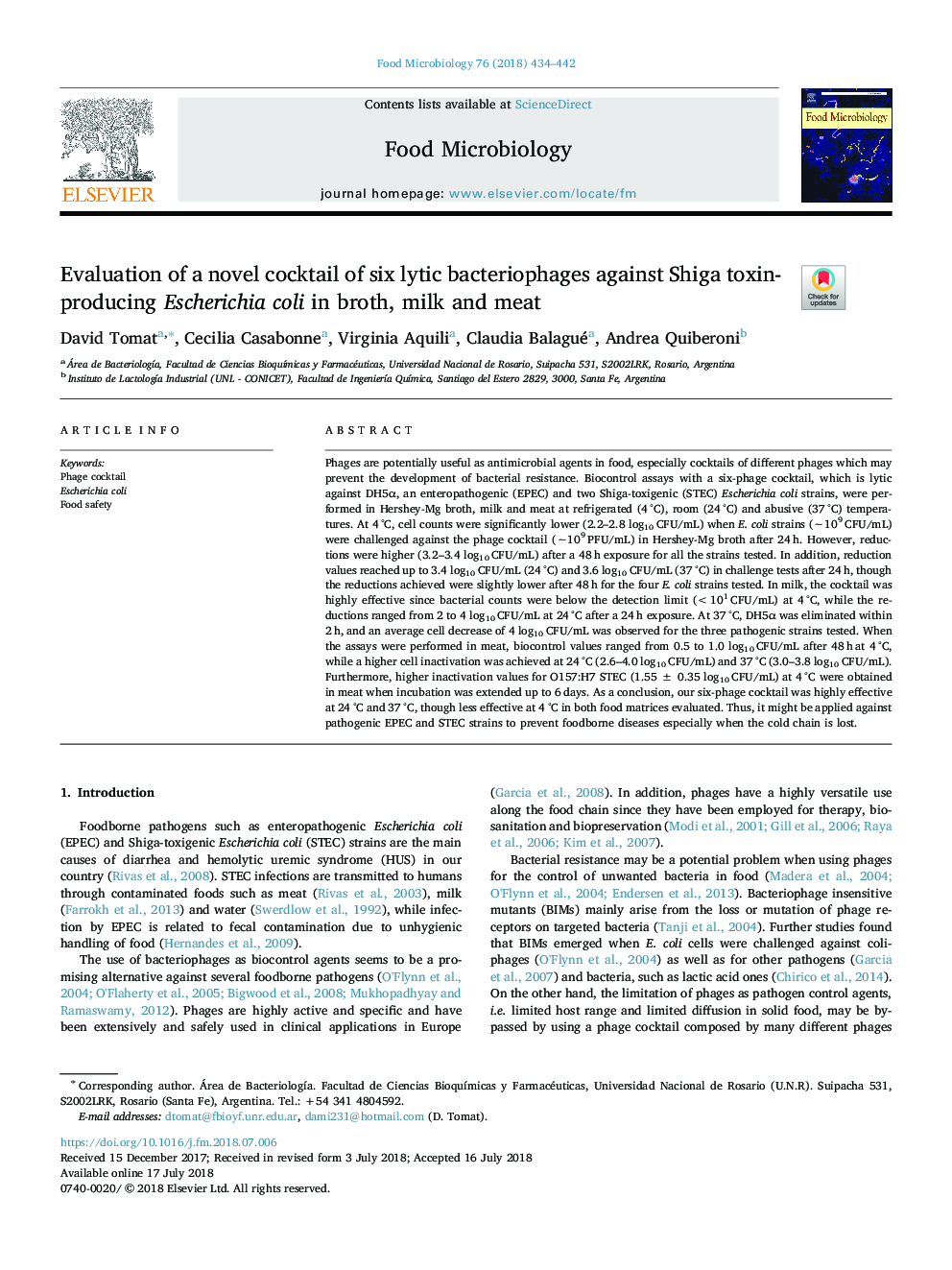| Article ID | Journal | Published Year | Pages | File Type |
|---|---|---|---|---|
| 8843459 | Food Microbiology | 2018 | 9 Pages |
Abstract
Phages are potentially useful as antimicrobial agents in food, especially cocktails of different phages which may prevent the development of bacterial resistance. Biocontrol assays with a six-phage cocktail, which is lytic against DH5α, an enteropathogenic (EPEC) and two Shiga-toxigenic (STEC) Escherichia coli strains, were performed in Hershey-Mg broth, milk and meat at refrigerated (4â¯Â°C), room (24â¯Â°C) and abusive (37â¯Â°C) temperatures. At 4â¯Â°C, cell counts were significantly lower (2.2-2.8 log10â¯CFU/mL) when E. coli strains (â¼109â¯CFU/mL) were challenged against the phage cocktail (â¼109â¯PFU/mL) in Hershey-Mg broth after 24â¯h. However, reductions were higher (3.2-3.4 log10â¯CFU/mL) after a 48â¯h exposure for all the strains tested. In addition, reduction values reached up to 3.4 log10â¯CFU/mL (24â¯Â°C) and 3.6 log10â¯CFU/mL (37â¯Â°C) in challenge tests after 24â¯h, though the reductions achieved were slightly lower after 48â¯h for the four E. coli strains tested. In milk, the cocktail was highly effective since bacterial counts were below the detection limit (<101â¯CFU/mL) at 4â¯Â°C, while the reductions ranged from 2 to 4 log10â¯CFU/mL at 24â¯Â°C after a 24â¯h exposure. At 37â¯Â°C, DH5α was eliminated within 2â¯h, and an average cell decrease of 4 log10â¯CFU/mL was observed for the three pathogenic strains tested. When the assays were performed in meat, biocontrol values ranged from 0.5 to 1.0 log10â¯CFU/mL after 48â¯hâ¯at 4â¯Â°C, while a higher cell inactivation was achieved at 24â¯Â°C (2.6-4.0 log10â¯CFU/mL) and 37â¯Â°C (3.0-3.8 log10â¯CFU/mL). Furthermore, higher inactivation values for O157:H7 STEC (1.55â¯Â±â¯0.35 log10â¯CFU/mL) at 4â¯Â°C were obtained in meat when incubation was extended up to 6 days. As a conclusion, our six-phage cocktail was highly effective at 24â¯Â°C and 37â¯Â°C, though less effective at 4â¯Â°C in both food matrices evaluated. Thus, it might be applied against pathogenic EPEC and STEC strains to prevent foodborne diseases especially when the cold chain is lost.
Related Topics
Life Sciences
Agricultural and Biological Sciences
Food Science
Authors
David Tomat, Cecilia Casabonne, Virginia Aquili, Claudia Balagué, Andrea Quiberoni,
